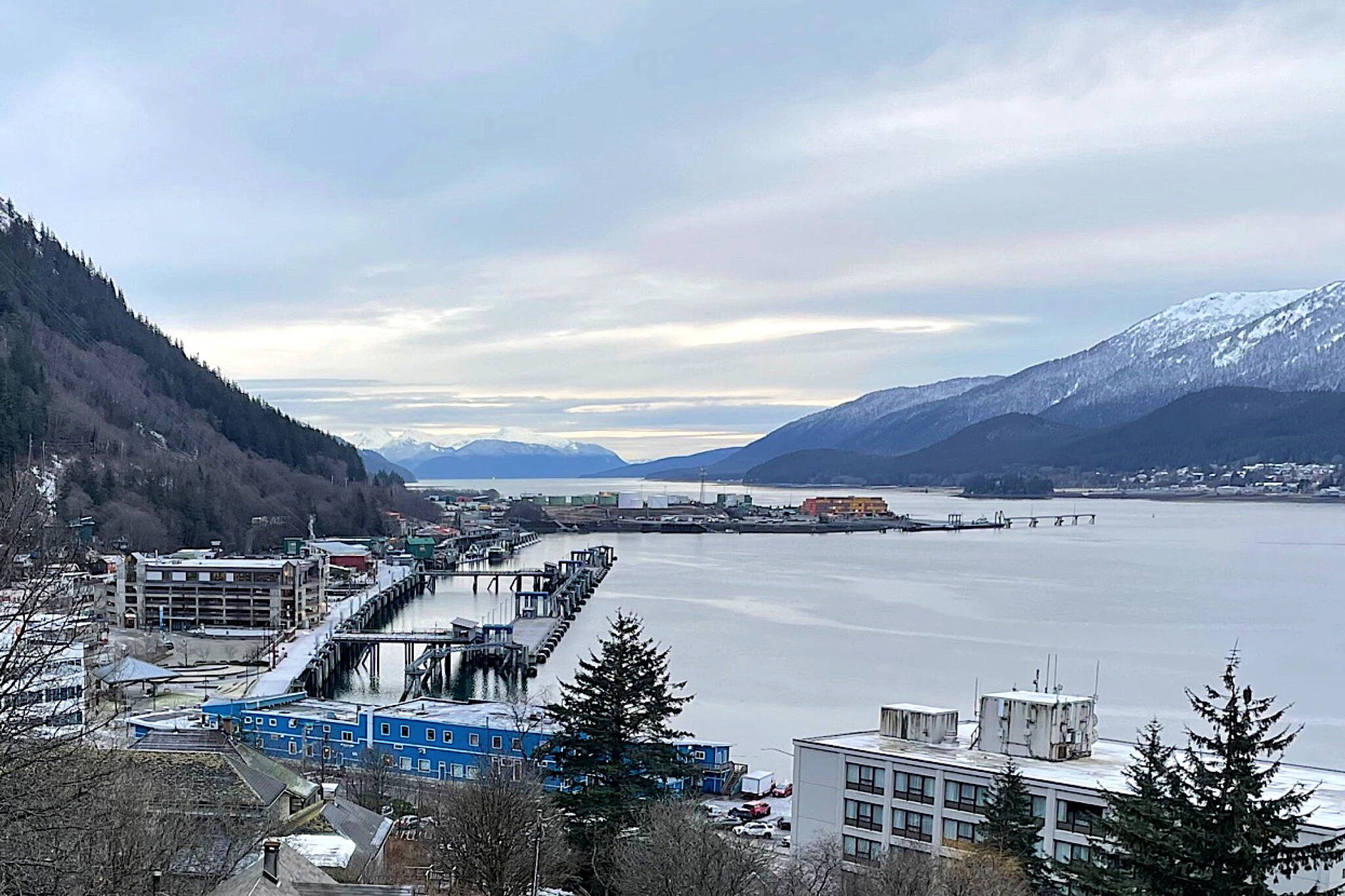An industrial lot just south of downtown is being considered for a possible homeless camp on Juneau’s rock dump. “Rock dump” is an inelegant name for a place that appears far tidier today than it did over many past decades, especially during the years it was used as a garbage dump. The history of the area is far more interesting, however.
During the heyday years of gold mining along Gastineau Channel, the Alaska-Juneau Gold Mine was the major economic resource for Juneau. At one time the A-J was the world’s largest low-grade gold mine. That meant there was a lot of non-mineral waste rock compared to paydirt.
Processing lode mine ore is a complicated and expensive undertaking. Underground rock must be located, drilled and blasted into moveable chunks, transported from the mine to a mill where the rock is crushed and valuable ore is extracted. The unused rock is considered waste and must be removed and stowed elsewhere.
It was only after the A-J mill was redesigned that the company turned around its fortunes and became profitable. That was in 1928, according to David and Brenda Stone whose important 1980 book “Hard Rock Gold” explains the history of Juneau and Douglas mining operations. The key change was to hand sort the rock coming from the mine on rail cars from inside Mount Roberts. Gold was found in the white quartz rock. Workers separated the quartz for crushing and milling while the darker “country rock” passed down the hillside for disposal in the channel.
“With hand-sorting,” the authors wrote, “46% to 48 percent of the ore was waste” — material not put through the grinding mills which was a costly step eliminated.
Soon the waste rock became voluminous. Photos of the fanned fingers of conveyor belts shuttling waste rock into the water remind a person of the unique pattern of grebe duck feet.
While the mine closed on April 9, 1944, the waste rock continued to provide Juneau with an accessible supply of inexpensive fill material for roads, development and facilities. Much of the rock filled the once essential access of Alaska Native people to their village waterfront areas occupied by today’s Centennial Hall, Alaska State Library, Archives and Museum and other businesses.
In the 1960s, the valuable milling equipment was removed and salvaged. The steep hillside mill buildings began their slow decline. On March 20, 1965, a catastrophic fire destroyed much of the structure. Today barely a visible remnant remains of the once terrain-dominating, stair-stepped, gravity-fed processing mill. The land has been reclaimed by Southeast Alaska’s rainforest vegetation.
In 1972, Alaska Electric Light and Power and the City and Borough of Juneau jointly purchased the former mine properties owned by A-J Holdings. Various development schemes have been considered during the years since that time.
Flat land is at a premium in mountainous and muskegy Juneau. Once the mine no longer needed a waste rock disposal area, the rock dump served new purposes, including a casual trash dump. Eventually the surface was smoothed with dark silty sand and converted to a barren, grassless area at one time called the Million Dollar Golf Course. The name derived from the potential that some residual gold particles could be found in the fill.
Anecdotal stories from long time locals recall the rock dump as a place of fun: to launch amateur-built rockets, to fly radio-controlled airplanes and to learn to drive a car. It was also a place to sneak off for a romantic tryst. One story tells of a smooching couple disrupted when an avalanche pushed their car off the rocks. Neither is rumored to have been harmed by the tumbling snow.
One of the most valuable results of the rock dump is the unintentional creation of a safe harbor for downtown Juneau. The promontory of land juts into Gastineau Channel and buffers wind and waves to make a calmer docking location for ships and floatplanes. At the same time, the channel is narrowed which could constrict navigability.
The rock dump exists today as an important industrial site. It is used as a tour bus storage and parking area, for the Alaska Marine Lines barge depot, a private cruise ship dock, an oil tank farm, a climbing gym called the Rock Dump and other businesses.
There is another facility on the rock dump that is the focus of community attention now. It is a city warehouse used during winter 2023-24 as an emergency warming shelter for homeless individuals and a nearby property. Under consideration currently is converting an adjacent fenced storage area for a homeless summer outdoor encampment. That would require removing many large sections of green metal that were once used as towers for the Snettisham power line. They are stacked inside the fenced zone.
The rock dump has served many purposes over the years. Serving people in need of housing while protecting private property is now presenting what both city officials and property owners call an immense challenge for many reasons with no easy answers.

